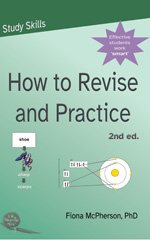We don’t deliberately practice our memories of events — not as a rule, anyway. But we don’t need to — because just living our life is sufficient to bring about the practice. We remember happy, or unpleasant, events to ourselves, and we recount our memories to other people. Some will become familiar stories that we re-tell again and again. But facts, the sort of information we learn in formal settings such as school and university, these are not something we tend to repeatedly recount to ourselves or others — not for pleasure anyway! (Unless you’re a teacher, and that’s part of the reason teaching is such a good way of learning!)
So, this is one of the big issues in learning: how to get the repetition we need to fix something in our brain. Simple repetition — the sort of drill we deplore in pre-modern schools — is not a great answer. Not simply because it’s boring, but because boring tasks are not particularly effective means of getting the brain to do things. Our brains respond much better to the surprising, the novel, the emotional, the interesting.
Teachers today are of course aware of this, and do try (or I hope they do!) to provide as much variety, and interest, as they can. But there is another aspect to repetition that is less widely understood, and that is the spacing between repetitions. Now the basic principle has been known for some time: spaced repetition is better than massed practice. But research has been somewhat lacking as to what constitutes the optimal spacing for learning. Studies have tended to use quite short intervals. But now a new study has finally given us something to work with.
For a start, the study was much bigger than the usual such study — over 1350 people took part — increasing the faith we can have in the findings. And, crucially, the interval between the initial learning session and the second review session ranged from several minutes to 3.5 months (specifically, 3 minutes; one day; 2 days; 4 days; 7 days; 11 days; 14 days; 21 days; 35 days; 70 days; 105 days). The time until test also covered more ground — up to nearly a year (more specifically: 7 days; 35 days; 70 days; 350 days). The initial learning session involved the participants learning 32 obscure facts to a criterion level of one perfect recall for each fact. The review session involved the participants being tested twice on each fact. They were then shown the correct answer. Testing included both a recall test and a recognition (multi-choice) test. The participants, by the way, ranged in age from 18 to 72 years, with an average of 34 (the study was done using the internet; so nice to get away from the usual undergraduate fodder).
So there we are, a very systematic study, made possible by having such a large pool of participants (the benefits of the internet!). What was found? Well, first of all, the benefits of spacing review were quite significant, much larger than had been seen in earlier research when shorter intervals had been used. Given a fixed amount of study time, the optimal gap, compared to no gap (i.e. 3 minutes), improved recall by 64% and recognition by 26%.
Secondly, at any given test delay, longer intervals between initial study session and review session first improved test performance, then gradually reduced it. In other words, there was an optimal interval between study and review. This optimal gap increased as test delay increased — that is, the longer you want to remember the information, the more you should spread the gap between study and review (this simplifies the situation of course — if you’re serious about study, you’re going to review it more than once!). So, for those remembering for a week, the optimal gap was one day; for remembering for a month, it was 11 days; for 2 months (70 days) it was 3 weeks, and similarly for remembering for a year. Extrapolating, it seems likely that if you’re wanting to remember information for several years, you should review it over several months.
Note that the general rule is absolute rather than relative: when measured as a proportion of test delay, the optimal gap declined from about 20 to 40% of a 1-week test delay to about 5 to 10% of a 1-year test delay. In other words, although the optimal gap between study and review increases as the length of time you want to remember for increases, the ratio of gap to that length of time will decrease. Which seems very commonsensical.
As the researchers point out (and as has been said before), “the interaction of gap and test delay implies that many educational practices are highly inefficient”, concentrating topics tightly into short periods of time. This practice is likely to give misleadingly high levels of immediate mastery (as shown in tests given at the end of this time) — performance which is unlikely to be sustained over longer periods of time.
It’s also worth noting that the costs of using a gap that is longer than the optimal gap are decidedly less than the costs of using a shorter gap — in other words, better to space your learning longer than too short.
